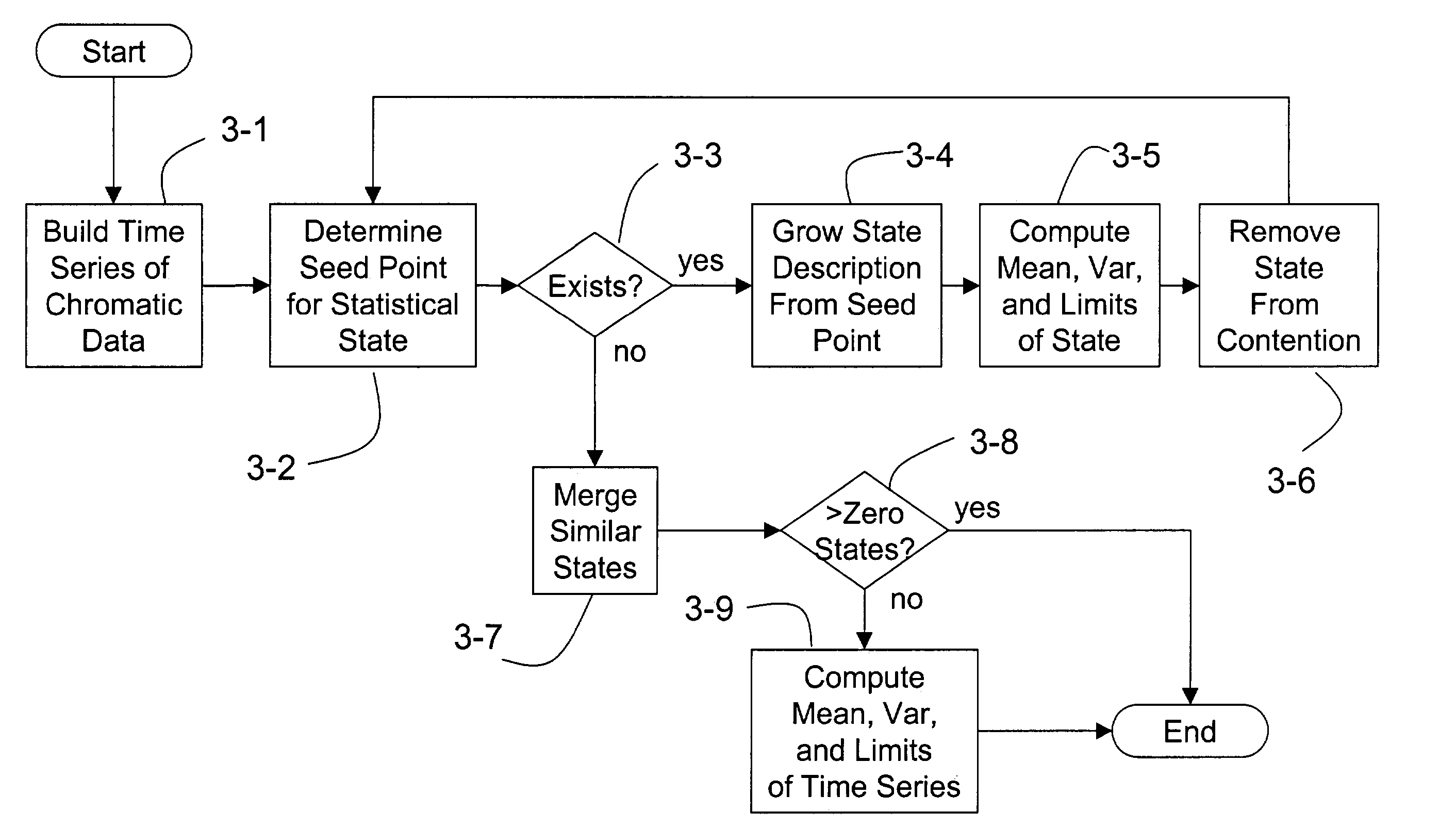Video scene background maintenance using statistical pixel modeling
a video scene and statistical pixel modeling technology, applied in the field of video processing, can solve problems such as unnatural-looking imagery, degrade the performance of video object segmentation for any application, and error detection, and achieve the effect of less susceptible to imag
- Summary
- Abstract
- Description
- Claims
- Application Information
AI Technical Summary
Benefits of technology
Problems solved by technology
Method used
Image
Examples
Embodiment Construction
[0043]FIG. 4 shows a flowchart of a basic algorithm according to an embodiment of the invention. As shown in the figure, video frames 1 are fed through an alignment process 2 prior to beginning the algorithm comprising the invention, per se. Alignment is discussed, for example, in U.S. patent application Ser. Nos. 09 / 472,162 and 09 / 609,919, mentioned above. After alignment 2, the embodiment of the algorithm comprises two steps, 3 and 4, and two optional steps, 5 and 6. Steps 3–6 are described in detail below.
[0044]Step 3 involves using the aligned video frames for building compact, multi-modal statistical descriptions for each pixel in the scene model. The goal is to describe the “life” of a pixel in the scene model as a series of statistical states with temporal delimiters indicating which state describes a pixel at a particular time. A summary of an embodiment of this part of the algorithm is shown in FIG. 5. The basic idea embodied in FIG. 5 is that a time series of chromatic val...
PUM
 Login to View More
Login to View More Abstract
Description
Claims
Application Information
 Login to View More
Login to View More - R&D
- Intellectual Property
- Life Sciences
- Materials
- Tech Scout
- Unparalleled Data Quality
- Higher Quality Content
- 60% Fewer Hallucinations
Browse by: Latest US Patents, China's latest patents, Technical Efficacy Thesaurus, Application Domain, Technology Topic, Popular Technical Reports.
© 2025 PatSnap. All rights reserved.Legal|Privacy policy|Modern Slavery Act Transparency Statement|Sitemap|About US| Contact US: help@patsnap.com



